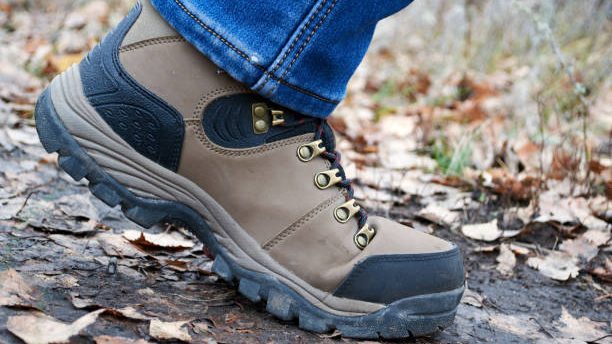When shopping for the perfect pair of hiking boots, the question arises: How snug should hiking boots be ? So ensure you have them measured with a specialized fit device to get a precise idea of your size.
Your feet swell throughout the day, so test them in the evening and while wearing socks similar to those you’ll use outdoors. Check their length later by standing on insoles that come out; an ideal shoe leaves room for a thumb’s width between the longest toe and the end of the sole.
Signs That Your Hiking Boots Are Too Small
Choosing a pair of boots that fit properly is essential for any outdoor adventure. If you are the wrong size, you can expect sore toes, toenails, and even an uncomfortable feeling like your feet are ready to burst out. To ensure maximum comfort on the trail, there are five signs every hiker should look out for before selecting their perfect pair.
Your Feet Feel Like They’re Being Squeezed
Check if your toes jam into the end; monitor pain in both toenails and digits themselves; pay attention, particularly when going downhill, as this will be especially obvious with ill-fitting footwear; lastly, don’t forget – it pays off to go up a size or take advantage of custom sizing options whenever possible.
When lacing up your hiking boots tight, you want to be sure they fit properly – not too small that it leaves little room for air and movement. Otherwise, the snugness might cause discomfort after walking a few miles. Loosening the laces can give feet more breathing space, but finding new shoes may be necessary if this doesn’t work.
Hiking Hurts Your Feet
For those who love hiking, toe jams, and tight laces can cause an unpleasant experience. Just a mile or so into the trek, your feet might start crying out in protest.
This could be telling you it’s time for bigger shoes – because why not make that adventure as comfortable and enjoyable as possible?
You Have Blisters at the End of a Hike
A pair of ill-fitting hiking boots can lead to more than just sore and blistered feet – they could cause your socks to give up the ghost, costing you precious money. To avoid losing out (literally.), ensure that your footwear fits properly so as not to end up with unhappy toes.
Your Toes Don’t Sit Flat in the Boot
If you plan on going for an outdoor adventure, ensure your hiking shoes are the right size. One way to check if they’re too small is to see how much room there is in them – do your toes sit flat at the bottom, or are there any overlaps?
Tight-fitting footwear will create discomfort between long nails and other toes, and it can also rub skin raw due to a lack of airflow. Avoid this by taking proper measurements before investing in new gear.
Tips for Choosing the Right-Sized Boot
When investing in a new set of hiking boots, it’s essential to be mindful before making an expensive purchase. Here are some tips on obtaining the perfect pair to ensure that your money is going toward quality and comfort for the long haul.
Check the Length of the Boot
Finding the perfect fit for your boots can seem daunting, but it doesn’t have to be. To ensure that you’ve got the right size – one which won’t give you an unbearable shoe jam at the end of a long day – try stepping out and stepping on its insole.
If there’s about a finger-width gap between your toes and where they meet with their edges, then you know those are yours always. Alternatively, stand up straight when wearing them, and let someone else slide their fingertip across from heel-to-toe; if it fits without too much effort. Congratulations – You’ve found ‘The One.’
Check the Width of the Boot
When searching for the perfect boot, ensure it fits your foot comfortably. You may need to slip out an insole and set your foot on top of it – if any part is hanging off or toes are overlapping, then you know a wider size needs purchasing.
But don’t forget about the all-important heel, ball, and toe placement either; once everything feels secure when standing with them, keep a keen eye open as to how comfy they feel when taking that walk around so feet can remain blister free.
Make Sure Your Toes Have Room
Whether you’re hitting the trails or running daily errands, your shoes should provide ample room for comfort. So slip on those boots and make sure they fit flat at the base of your foot –
if there isn’t a gap of roughly one finger’s width beyond where your toes end, it may be time to size up. That tiny bit extra will prevent toe-jamming and keep feet from feeling crowded during long days out adventuring.
How to Prepare New Boots for a Hike
Get your boots trail-ready. If you want to make sure that hiking shoes are comfortable and won’t give you blisters, the best way is by breaking them in gradually.
Start wearing them on easy trails before testing out their endurance with lengthier and more strenuous treks. That way, when it comes time for an adventure, both of you will be prepared.



